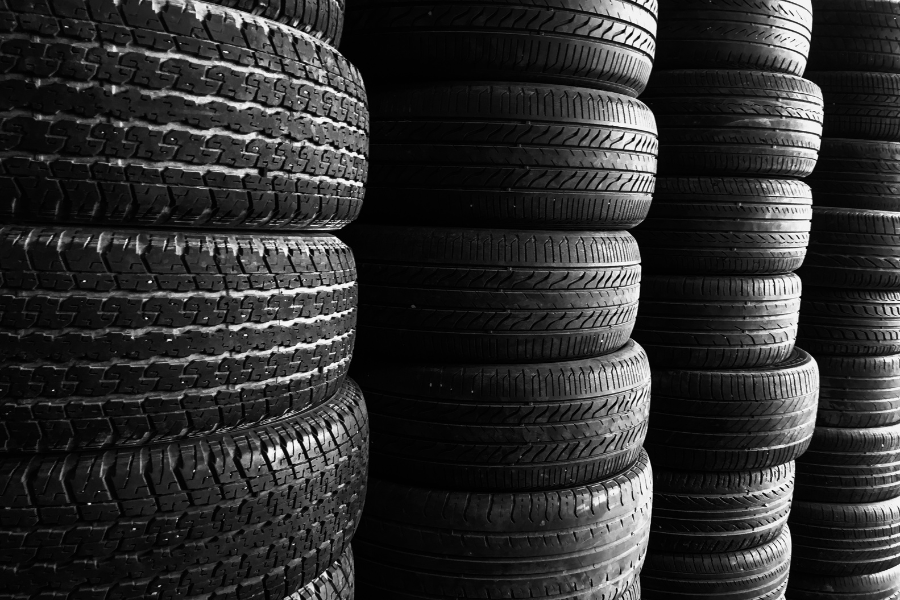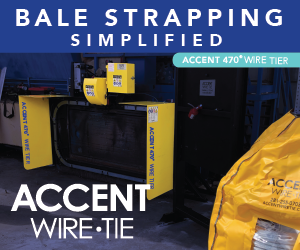
Under the new law, tire recycling fees will be deposited into a stewardship fund, and manufacturers will be required to demonstrate that used tires are being recycled or resold. | Leestudio/Shutterstock
Connecticut this summer became the first state to enact a statewide extended producer responsibility program for tires, moving beyond previous iterations of regulated programs into fully producer managed and funded end-of-life management.
Backers of the policy have been fighting for it since 2015.
HB 6486 was signed into law by Governor Ned Lamont June 28 of this year. Jen Heaton-Jones, executive director at Housatonic Resources Recovery Authority and chair of the Connecticut Product Stewardship Council, said it is years in the making and is intended to curtail illegal dumping.
“We need to stop the dumping happening in the first place,” she said. “We don’t want money to clean up.”
The bill requires tire manufacturers to finance and run collection and recycling/disposal of end-of-life tires. The goal is to decrease illegal dumping and boost both tire recycling rates and retreading rates, a Product Stewardship Institute (PSI) press release noted.
An estimated 3.1 million scrap tires are generated annually in the state, and prior to 2014, about 75% were burned for fuel. When Exeter Energy closed its tire-derived fuel operation, more tires were illegally dumped, PSI reported. In 2014, more than 16,000 illegally dumped tires were picked up by the Connecticut Department of Transportation.
The press release noted that the tire law is the sixth EPR law in Connecticut and marks the third time the state has led the nation by enacting a first-of-its-kind product EPR bill. It did the same with mattresses in 2013 and fuel cylinders in 2022.
Scott Cassel, CEO of PSI, said in an interview that while earlier laws helped clean up the massive piles of dumped tires, it was time to update those laws and programs and tackle the issue fully.
Learn more in person
To keep up to date on the latest nationwide policy developments, join us at the 2023 Resource Recycling Conference (August 14-16 in Orlando, Fla.). We’ve got top-level panels covering the evolution of deposit return systems, the intersection of plastics and EPR, what to expect on the legislative landscape in 2024, and the return of the Policy Talks mini-stage (facilitated by the experts at Eunomia!). Check out the full session lineup and register today.
“It certainly produced that funding to clean up large tire piles and set in place a decent system for recycling, but what happened over time, maybe even at the beginning, is all those tires were being burned,” he said. “The tire industry calls it recycling. They have misled many people. There is some recycling of these tires, some retreading, but very little.”
The U.S. Tire Manufacturers Association (USTMA) said it is “committed to market development for sustainable and circular end-use markets for scrap tires” and that there is already a mature recycling system in place.
“While our individual member companies seek to improve tire design for the circular economy, USTMA works to convene stakeholders, advance environmental impacts research and share best practices across state programs,” a spokesperson said. “Our goal is for 100% of scrap tires to enter sustainable and circular end-use markets.”
USTMA also said it does not believe HB 6486 “was the right approach and believe, as enacted, will disrupt Connecticut’s existing system that currently captures roughly 99% of scrap tires in the state.”
The organization plans to work with the governor and state agencies “to resolve challenges and any unintended consequences related to this law,” the spokesperson added. “We look forward to continued engagement with Connecticut officials to support practical, achievable solutions to increase tire recycling.”
Crafting the law
An extended producer responsibility (EPR) law for tires has been in the works since at least 2015, Heaton-Jones said. She testified in support of it nearly every year and took a significant role in the process three years ago, she said, before taking over “wholeheartedly in 2021.”
She met with industry, surveyed towns across the state, collected data and information, and tried to craft a law that would be supported by everyone. However, Heaton-Jones said the end result took tenacity, because in the end the tire industry did not back the bill.
“It certainly took a lot of fortitude because it was an EPR law that industry did not support,” she said, adding that after many meetings and no concessions, “it was clear they were not going to come to the table and that I just had to do my own thing.”
That meant building relationships with legislators, she said, and pushing back on the tire industry’s stance that all tires were already responsibly managed.
“The industry kept saying there was no problem. They kept using the number only 1% of the tires are an issue,” she said. “Well, in the state of Connecticut there are 3.5 million tires in circulation and 1% of that is 35,000 tires. You’re telling me 35,000 tires are not a problem in this tiny little state?”
Cassel agreed, saying, “The industry fought against this and is still fighting, attacking the law in implementation.”
“This is an industry that has not gotten the EPR message yet,” he added, noting that when industry works with the legislature, the law tends to be better and easier to implement.
What ended up pushing the bill over the finish line was a high-profile dumping case just as the bill reached the House floor for a vote, Heaton-Jones said. Two men were arrested and charged for dumping truckloads of tires down an embankment. Heaton-Jones said she went to the location herself to take photos and shared them with legislators to illustrate the impact of mismanaged tires.
“There were thousands of tires,” she said. “I used those photographs as part of the story of ‘it’s not going away.’ Illegal dumping is here. We need to do something about this. We need accountability and consumer transparency and we do not have that currently.”
Heaton-Jones said the Connecticut Conference of Municipalities supported the bill, and there was “not one local official who wasn’t supportive.”
The nitty-gritty
Currently, after replacing a customer’s tire, Connecticut retailers and repair shops charge a tire recycling fee, which is intended to cover the cost of recycling or disposal. But many tires are still illegally dumped, Heaton-Jones said.
Under HB 6486, that fee will go to a stewardship fund instead and transporters will be paid only upon delivery of the tires to a processor or end market. Tire manufacturers will also be responsible for managing the system and reporting to the state, she added.
The law covers tires of any type of passenger or commercial on-road or off-road motorized vehicle. It also notes that incineration or waste-to-fuel does qualify as recycling, “provided such incineration does not occur in this state.”
Producers will have to join a tire stewardship organization by Jan. 1, 2025, and then submit a plan describing how the organization will establish a statewide tire stewardship program that provides free access to the public and ensures all discarded tires are resold or recycled. It will also need to set and achieve performance goals.
Plans also need to “describe the industry transition timeline that is required to achieve such performance goals and how the plan will, to the greatest extent economically feasible, utilize existing service providers and infrastructure in the state,” the law states.
If another state implements a tire stewardship or recycling program, the tire stewardship organizations can collaborate, the law noted.
In addition, the law directs the Commissioner of Transportation to pilot the use of tire-derived asphalt on main state roadways.
Cassel said the law is not overly prescriptive, as is Connecticut’s style.
“I imagine other states would want to do something more prescriptive,” he said.
For those states that want to follow in Connecticut’s tracks, he suggests not counting on industry to come to the table and instead educating legislators about why industry is not engaged in the process and why tires are such a problem.
“It needs to be made in the case of the cleanup costs will be removed, the environmental impacts from illegal dumping will be removed and those tires will go to legitimate recyclers for them to develop new markets,” Cassel said.
More stories about EPR/stewardship
- CAA publishes revised Colorado program plan
- WM outlines investments in recycling infrastructure
- ‘Operational readiness is high’ as Oregon rolls out EPR




